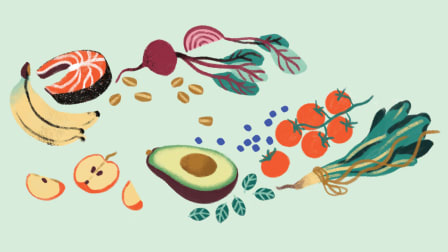How Red Meat Can Fit Into a Healthy Diet
Get the nutritional benefits of beef, pork, and lamb while minimizing the downsides

Concerns about health and the planet have made plant-based diets all the rage. You don’t have to eat meat to get the nutrients you need, but, similarly, following a plant-based diet doesn’t have to mean going full vegetarian. It’s simply a way of eating that emphasizes fruits, vegetables, whole grains, and beans—and meat, even red meat, can fit in.
"Meat often gets demonized because the data we have on its negative health effects comes from studies conducted in populations that, in many cases, don’t have overall healthy diets," says Kristina Petersen, PhD, associate professor of nutritional sciences at Pennsylvania State University. There’s a difference between having meat in the form of a large burger and fries and a small portion of lean beef paired with a pile of veggies.
Pros and Cons of Red Meat
It’s true that red meat can be high in saturated fat. "We know that higher amounts of saturated fat are associated with heart disease, diabetes, and other health problems," says Qi Sun, ScD, associate professor of nutrition and epidemiology at the Harvard T.H. Chan School of Public Health in Boston.
How Much Meat Is Okay?
There isn’t consensus on this question. Some experts maintain that if you keep portions to 3 ounces or less, even a daily dose of meat (21 ounces a week) is fine for most people. Others advise equally small portions only a few times a week. For example, to help prevent some cancers, the American Institute for Cancer Research recommends no more than 12 to 18 ounces of red meat per week. So somewhere between four and seven 3-ounce servings a week seems reasonable. Limiting your intake to that amount may also help the environment, because red meat production uses water and land resources and creates greenhouse gases.
But the one thing everyone agrees on: While the amount of meat matters, everything else on the plate is even more important. "Eating some meat along with lots of fruits and veggies is unlikely to have adverse health effects," says Petersen. For example, having 13 ounces of red meat per week didn’t raise or lower the risk of cardiovascular disease when the diet contained plenty of plant foods, according to a 2023 study in the European Heart Journal.
Healthy Steps for Meat Lovers
Avoid processed meats. Deli meats, hot dogs, bacon, and sausage can be very high in sodium and contain lots of preservatives and other additives. "In general, the more you alter fresh foods through processing, the less healthy they may become—and meat is no exception," says Sun. Harvard researchers found that increasing processed red meat intake by just half a serving per day (½ ounce deli meat, ½ hot dog, or 1 slice bacon) raised the risk of dying over the next eight years by 13 percent.
Have it your way. Do you prefer a meal with a nice-sized piece of steak? If so, you can have an 8-or 10-ounce steak one day and very little red meat the rest of the week. If you’d rather have it more often, eat smaller portions. "Three ounces isn’t much, but it goes a lot further when you mix it with veggies for a stir-fry, with beans for chili, or into a sauce over pasta," Slavin says.
Choose lean cuts. These include beef sirloin, beef top round, beef and pork tenderloin, and lamb leg and loin. Ground beef that’s 95 percent lean contains less than 2 grams of saturated fat in 3 ounces.
Alternate red meat with poultry and fish. Most studies show that poultry neither raises nor lowers the risk of heart disease. Fish has heart-healthy omega-3 fatty acids.
Consider your diet as a whole. The more room meat takes on your plate, the less room you have for veggies, whole grains, fruits, nuts, and legumes. "In some of the studies that have shown eating a lot of meat is associated with negative health effects, it’s hard to know if that’s attributable to the amount of meat or more about displacement," says Petersen. "In other words, is the problem that you’ve increased an unhealthy food or decreased healthy ones?" So be sure to have plenty of plant foods alongside meat and have a few meatless meals each week.
Editor’s Note: This article also appeared in the December 2023 issue of Consumer Reports On Health.




















